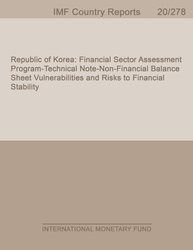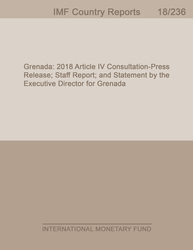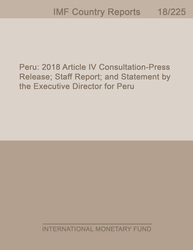
Republic of Korea:Financial Sector Assessment Program-Technical Note-Non-Financial Balance Sheet Vulnerabilities and Risks to Financial Stability
Financial Sector Assessment Program-Technical Note-Non-Financial Balance Sheet Vulnerabilities and Risks to Financial Stability
READ MORE...
Volume/Issue:
Volume 2020
Issue 278
Publication date: September 2020
ISBN: 9781513557045
$18.00
Add to Cart by clicking price of the language and format you'd like to purchase
Available Languages and Formats
| English |
Prices in red indicate formats that are not yet available but are forthcoming.
Topics covered in this book
This title contains information about the following subjects.
Click on a subject if you would like to see other titles with the same subjects.
Exports and Imports , Finance , Economics- Macroeconomics , ISCR , CR , market mis-valuation , return on assets , capital structure , household debt , household balance sheet vulnerability , household balance sheets , leverage ratio , household balance sheet resilience , Financial statements , Personal income , Debt service , Housing prices , Stress testing , Global
Also of interest
Summary
Non-Financial Corporate Sector. Non-financial corporate leverage as share of GDP in Korea remains higher than peer countries but has remained stable since 2013 at around 100 percent of GDP. The stock of non-corporate debt has become slightly more resilient due to the deleveraging of non-conglomerate affiliated firms. Average firm performance has remained resilient for conglomerate-affiliated corporates but weakened for all other firms. As a result, despite the low interest rate environment, around one-quarter of total corporate debt (around 28 percent of GDP) is registered ‘at-risk’. Banks balance sheets are at risk as over half of non-financial corporate debt-at-risk resides with SMEs; Stress tests show that (i) Korean firms which are more indebted, less profitable, smaller and have lower turnover are more likely to experience difficulties servicing their debt; (ii) corporate balance sheets are vulnerable to a sudden hike in interest rates, which combined with a profit shock, could double the amount of debt-at-risk held by non-SME firms and; (iii) exchange rate shocks appear manageable given low FX debt and natural FX hedges. Under a downside macro-financial stress test scenario, non-SME credit losses would total a touch over 2 percent of GDP. Bank stress tests suggest that the maximum cumulative bank losses from distressed SME loans in a stress scenario would total around 2 percent of GDP. Together, these losses would be broadly manageable for the financial system to absorb.
Copyright © 2010 - 2025
Powered by:
AIDC



